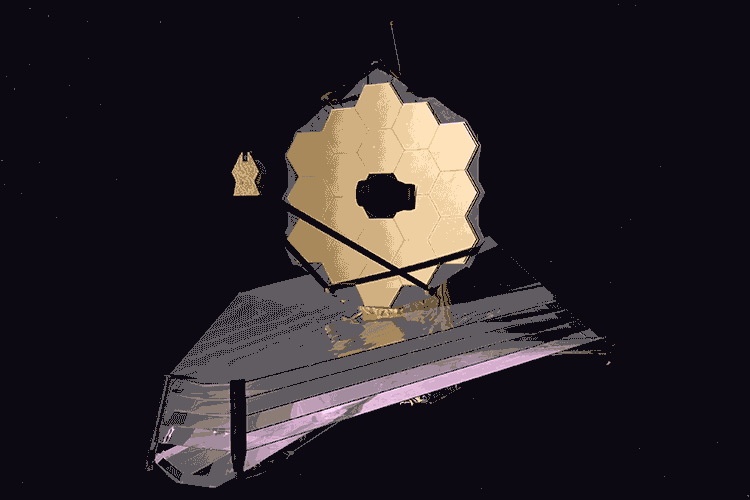Berkeley astronomers selected to take new space telescope for a spin
Astronomers will be first to use new James Webb Space Telescope - in two years, after launch and commissioning

November 21, 2017
Two UC Berkeley astronomers are eagerly awaiting the spring 2019 launch of the James Webb Space Telescope, having been chosen to lead two of the first 13 groups that will test the capabilities of NASA’s snazzy new successor to the Hubble Space Telescope.
The 13 teams, which were announced last week, won’t be able to get their hands on any data for another two years, following a six-month commissioning period after launch. But from November 2019 until April 2020, these teams will scan objects near and far, ranging from planets in our solar system to planets around nearby stars, and from star systems in the Milky Way galaxy to galaxies at the edge of the universe.
“The diversity of science represented by these 13 teams is amazing,” said Daniel Weisz, an assistant professor of astronomy and leader of one of the teams. “We are definitely excited about this opportunity.”
The teams are hoping for new discoveries, but they’ve also been selected because of promises to provide baseline information for future observers and computer software tools that those astronomers will need to make sense of their observations on the telescope.
“With the telescope’s five-year lifetime, we need to use it very efficiently to maximize the return,” Weisz said. “The early release science program is supposed to produce science-enabling results within five months of the observations, which in the astronomy world is basically yesterday.”
Letting astronomers rather than staff take the telescope for a test drive is a new concept for NASA, said Imke de Pater, a UC Berkeley professor of astronomy who will lead a team using the telescope for up-close observations of the solar system. She and her team will focus on Jupiter, its moons Io and Ganymede and its faint rings, to see if they can capture fine detail against the bright background of Jupiter, which is actually too bright for the telescope to look at without filters.
“We will see if we can image the rings and get rid of the scattered light from Jupiter, which pushes the telescope’s limits and really tests the capabilities of JWST,” she said.
Weisz, who studies star systems, from globular clusters with millions of stars to galaxies in the local Universe, will take the long view. He is particularly interested in systems near enough that individual stars can be picked out and counted, which can tell astronomers about the history of the galaxy and ultimately the history of the universe.

James Webb Space Telescope, courtesy of NASA.
The James Webb telescope will be ideal for this, because its mirrors will be two and a half times the size of the mirror in the Hubble space telescope, effectively cutting the time it takes to collect data on a cluster or galaxy by a factor of 10. This allows detailed studies of the very faintest stars, some of which first started to glow when the universe was a baby more than 10 billion years ago.
“For studies of very faint stars in the Milky Way – our own galaxy – the JWST is going to be phenomenal,” he said. “The telescope will do roughly in its five- to 10-year mission what Hubble has done in its 25-year mission for local galaxies.”
During the 20 hours of telescope time allocated to his team, they will take images in both optical and infrared for a globular cluster in the Milky Way, a very faint, dark-matter-dominated dwarf galaxy that orbits the Milky Way and a close neighbor and traveling companion of the Milky Way, a galaxy at a distance of about 3 million light years.
By counting and determining the age of each star within within these galaxies, for example, he hopes to shed light on what happened early in the universe when stars first began to shine across the cosmos, the so-called epoch of reionization.
“We are adjusting our academic schedules so that we will be ready to hit the ground as soon as the data gets downloaded; we will be off to the races,” Weisz said.
De Pater admits that two years is a long time to wait, but she, her co-leader Thierry Fouchet of the Observatory of Paris and their team hope to use their 28.9 hours of observing time to measure the wind speeds in Jupiter’s Great Red Spot, observe gases in the atmospheres of Io and Ganymede and see ripples left by comets in the rings around the planet.
“The idea is that for any solar system object, you have to assemble a mosaic of the planet or moon from multiple observations when everything is moving and rotating and changing. How do you do that?” de Pater said. “We have to develop the software so that astronomers can put their little postage stamps together into a map.”
UC Berkeley research astronomer Michael Wong is one of the co-investigators on de Pater’s team.